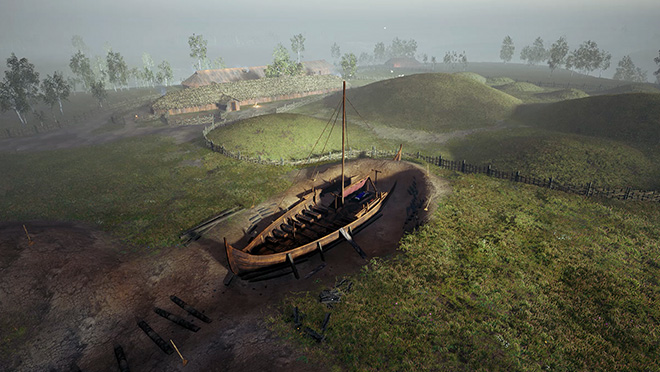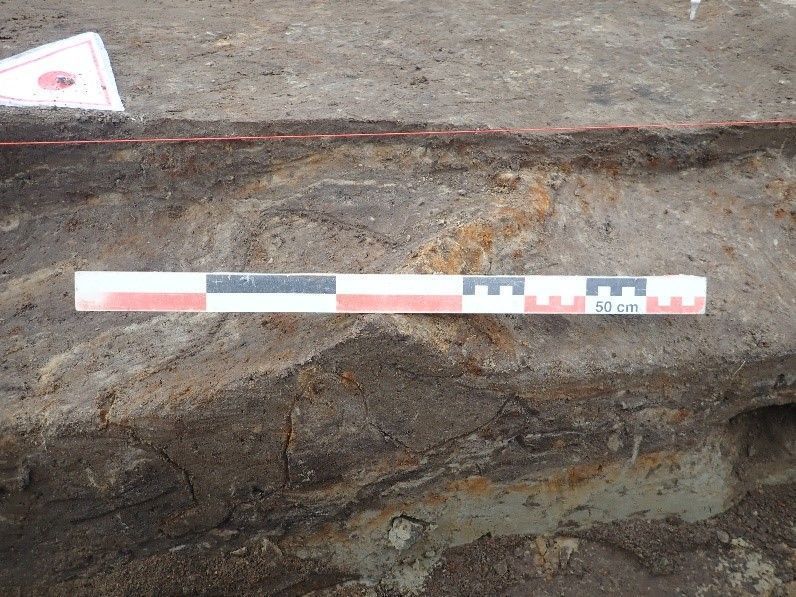
When studying the geographical terrain of Southern Scandinavia, you often come across low, rounded hills across vast flat farmland. These hilly structures are burial mounds from the Viking era.
In 2018, local officials chose the Norwegian Institute for Cultural Research to investigate the area around a burial mound just north of the Swedish border.
During the research, the ground-penetrating radar revealed the existence of ten more mounds ploughed in the last 150 years. Similarly, another feeble line showed the presence of a wooden ship, possibly from the Viking era.
The ship is more than 60 feet long, making it the longest ship discovered. In addition, the boat is the first Viking ship discovered intact. Archaeologists declared it a ‘hundred-year find.’

Gjellestad’s ship was supposed to be kept from being dug up. However, rapid climate change and increased agricultural activity forced the archaeologists to dig up the boat. Thus, the study of the ship began. The five-year research provides an unprecedented source of vast information. It also gives us insight into the burials of ancient seafarers.
Viking Burials: Sea or Land?
In popular culture, Viking warriors were laid to rest in their sleek ships. Then, they were either set on fire or pushed out into the sea as a burial ritual. However, little evidence exists to support it.
On the contrary, around 400 A.D., hundreds of Scandinavian warlords began burials in 20 feet high earthen mounds in longships. Then, many more thousands were buried in smaller boats. Today, Scandinavian ship graves are near extinction. Over the centuries, many were robbed of contents or ploughed away.
As a result, the few found since 1904 are either shipwrecks or leftovers.
That is why the Norwegian government decided to leave the Gjellestad ship underground and hidden. A year later, archaeologists returned to the potato field to conduct a small excavation to understand how well the longship was preserved.
A sample taken from a trench cut across the vessel revealed that the keel (spine) of the ship was intact even centuries later. The research also found the boat to be built around 800 A.D. The incredible preservation is credited to the agricultural ditch dug in the 1960s and the increasingly warmer weather due to climate change.

Excavation director Christian Løchsen Rødsrud, a University of Oslo archaeologist, said, “The keel is so deep it’s been wet the whole time. But the [planking has] been dried and become wet again so many times, there’s not much left.”
However, archaeologists also identified an aggressive fungus within the ship that had begun to consume any remaining wood. And that is what called for a large-scale excavation.
The Emergency Excavation
For the first time since 1905, researchers broke ground on the Viking burial ship in the summer of 2020. However, the ship’s condition forced Rødsrud and his team to improvise strategically.
Researchers plowed the top half of the ship long ago. At the same time, much of the remainder rotted away. Luckily, the critical elements of the ship’s construction persisted, with almost 1400 rust-covered iron rivets.
The team studied every rivet, recording their location before being excavated. Ultimately, the soil will be CT-scanned over the next year, and clips will be reassembled into 3-D models.

“Imagine reconstructing a house by looking only at the nails and roof beam. It’s going to be like Tetris.” However, researchers have also uncovered critical clues that indicate that the 60-foot-long keel is skinnier than a Viking longship. It also lacks the reinforcements required to support a mast, meaning the vessel was rowed, not sailed.
It is understood that the ship dates back to the early 8th century when Scandinavians first began to fit sails. The boat seems to be a transitional design from the beginning of the Viking age. However, Rødsrud said, “[we] cannot conclude that the ship could not carry a mast before the reconstruction is made.”
Jan Bill, a curator at the Viking Ship Museum in Oslo and expert on Viking-era sailing vessels suggests cost might have been a factor. “The sail cost might be almost as much as the ship itself. So they could have removed the mast because it was so expensive.”
Viking Burial Rituals
Archaeologist’s analysed the soil around the Gjellestad ship. They determined that people cleared a 50-foot circle of topsoil before hauling the boat on shore, possibly from a nearby stream. A ditch dug around the process kept people away from the vessel in its centre.

At the same time, an earthen ramp or gangplank was installed on one side of the ship to facilitate the burial. At the bow of the boat was a pool of blue-grey clay. The effect may have resembled a circular theatre, with rituals taking place on the ship over weeks or even months.
Neil Price, an archaeologist at Uppsala University in Sweden, believes Viking ship burials were ‘more than just a ceremony.’ Instead, he thinks they are an arena for interacting with the dead.
Moreover, the person who orchestrated the burial 1200 years ago noted the slightest details. Squares of sod were cut and then re-used like bricks to build up the burial chamber. The turf bricks allowed the researchers to point out the time of year the grass was cut. The long-gone warlord was laid to rest at “harvest season when the fields are all yellow,” Rødsrud notes.
Gokstad, a famous Viking ship dug up in 1880, supports the theory. Researchers sampled over 100 soil samples from the burial mound before it was displayed in Oslo’s Viking Ship Museum.